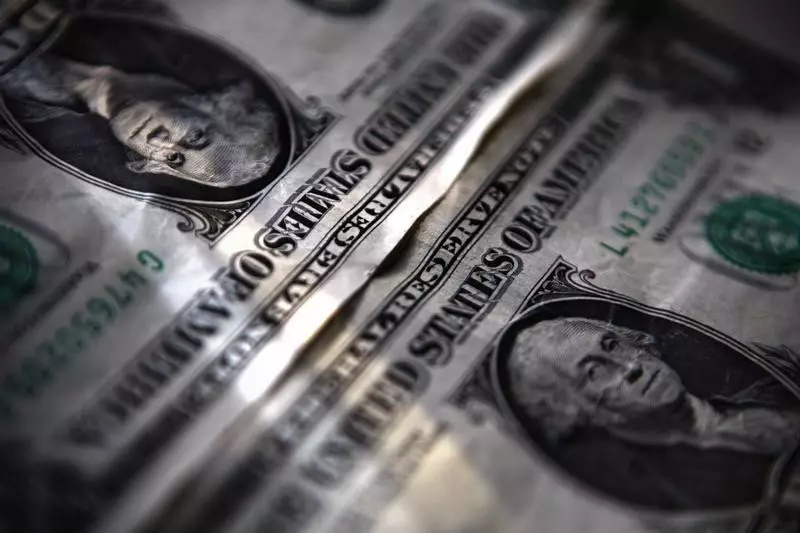The Weakening Dollar: Navigating Political Uncertainty and Global Economic Decisions

On the eve of a pivotal U.S. presidential election, the U.S. dollar experienced a noticeable retreat. Political uncertainty looms large, with imminent decisions likely to impact not just domestic markets but the global economy as well. The Dollar Index, which measures the currency against a basket of major world currencies, dropped by 0.5%, settling at 103.695. This decline can largely be attributed to the tension surrounding the electoral contest between incumbent Republican candidate Donald Trump and Democratic challenger Kamala Harris, which remains exceptionally close. The political landscape, influenced by voter demographics, particularly women’s support for Harris, adds a layer of unpredictability to market movements.
The upcoming election is proving to be a critical influencer for market behavior, compelling analysts and investors to recalibrate their strategies. ING analysts suggested a cautious approach among investors, as uncertainty around the outcome could lead to volatile swings in currency values. This sentiment was echoed by the notable shift in trades linked to Trump, where the prospects of his economic policies have created a complex blend of fear and opportunism. Given Trump’s stances on immigration, tax cuts, and tariffs, concerns are rising that his re-election could exacerbate inflationary pressures, pushing bond yields higher and, consequently, the dollar’s value.
As the election date approaches, the influence of these market dynamics cannot be understated. Investors find themselves weighing the implications of probable monetary policy changes from the Federal Reserve against the political backdrop. The Fed is anticipated to cut interest rates by 25 basis points later in the week, building on a significant reduction of 50 basis points implemented just the previous month. While such a lowering of rates could traditionally exert downward pressure on the dollar, the impending election may overshadow these effects, suggesting further volatility in the currency markets.
Turning to the European currency landscape, the euro has capitalized on the dollar’s weakness, with the EUR/USD pair climbing by 0.5% to 1.0892. Recent data out of the eurozone also lend a supportive hand to the euro’s ascent. The final manufacturing PMI, reflecting modest improvement despite remaining in contraction territory at 46.0, marked a slight recovery in manufacturing sentiment. The response from markets has been notable, as speculations surrounding the European Central Bank have shifted, reducing expectations for aggressive dovishness in light of economic indicators. However, caution prevails, especially if Trump’s policies usher in a wave of protectionist measures that could prompt the ECB to reconsider its easing strategy.
In the context of the British pound, it has similarly regained some ground, rising by 0.3% against the dollar. This increase is particularly noteworthy following the negative sentiment that characterized last week’s trading sessions. The Bank of England’s stance, poised to cut rates as well, has made market watchers keenly interested in the discussions emerging from its meetings. The recent budget announcement’s implications remain a critical focal point for markets as they navigate the potential for growth or inflation concerns.
As we analyze currency movements beyond just the dollar and euro, the yen and yuan are also making headlines. The USD/JPY pairing fell as the dollar’s retreat pushed it down by 0.6% to 152.11, responding to new highs from the previous months. A hint of hawkishness from the Bank of Japan signals potential shifts in its monetary policy that could further affect the yen’s strength in the coming days.
Meanwhile, the Chinese yuan has also notably dropped against the dollar, marking a decline of 0.3% to 7.1009. The focus here shifts to the ongoing discussions within China’s National People’s Congress, indicating that shifts in economic policy are also closely monitored by investors worldwide.
The U.S. dollar’s recent retreat illustrates the intricate dance of political and economic forces at play. With the presidential election making waves ahead of critical monetary policy decisions, investors must remain vigilant and adaptive. Political outcomes will likely dictate the direction of currency fluctuations, making this period particularly sensitive to both domestic and international developments. As we move forward, the intricate interdependencies of global currencies will demand keen observation amid these unfolding events.





